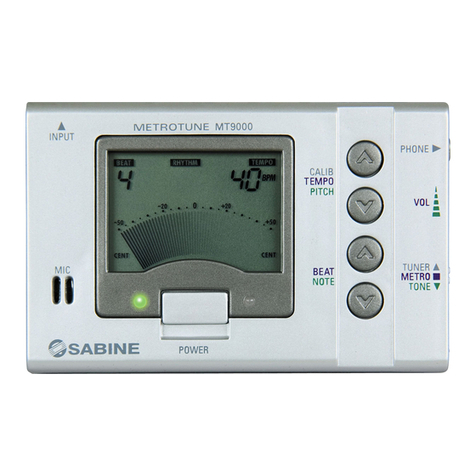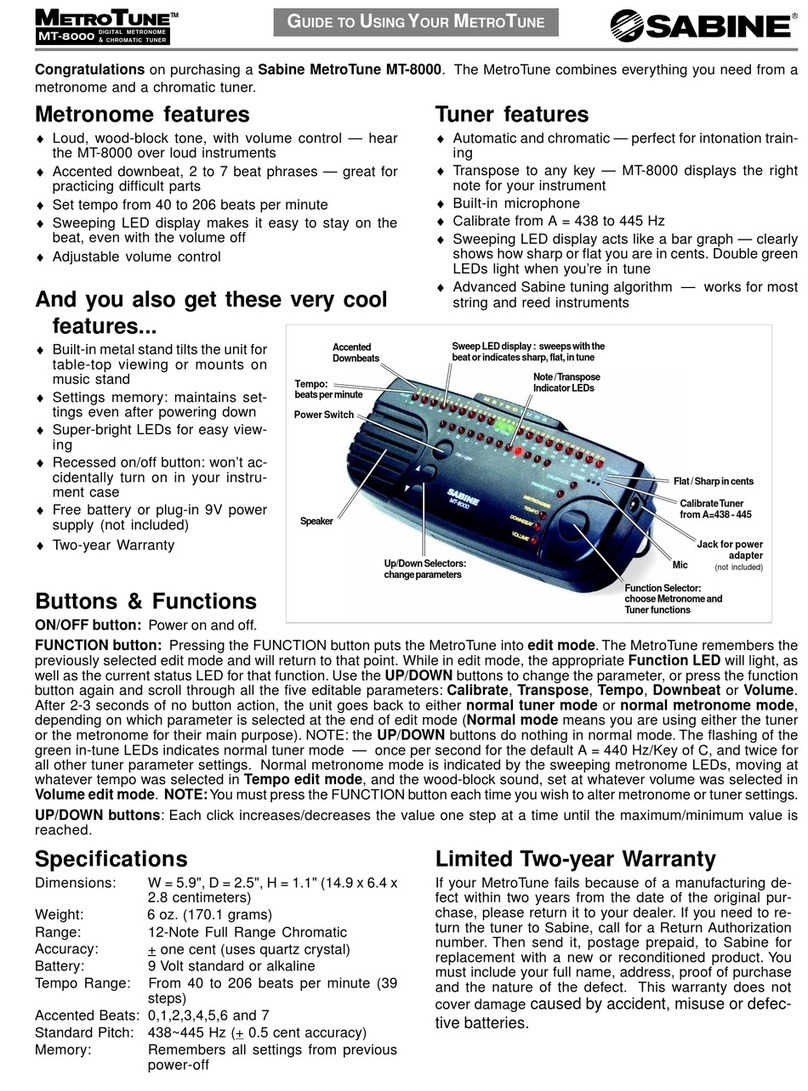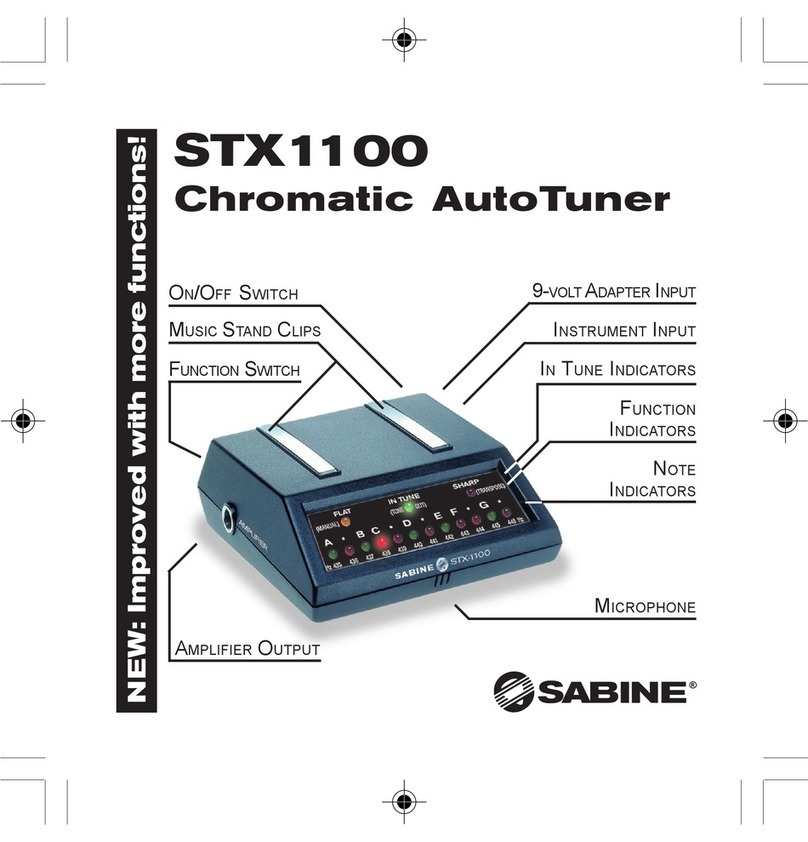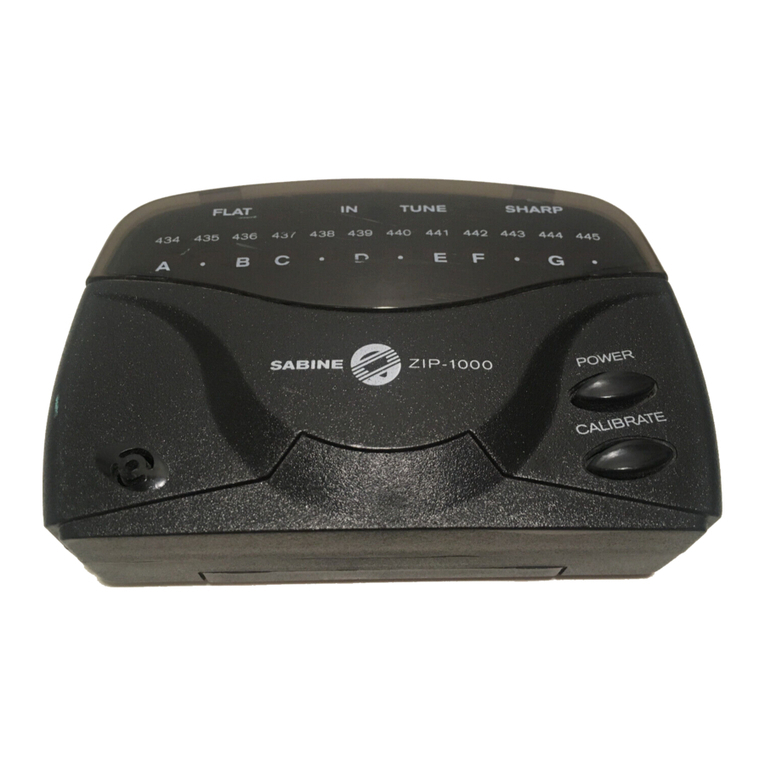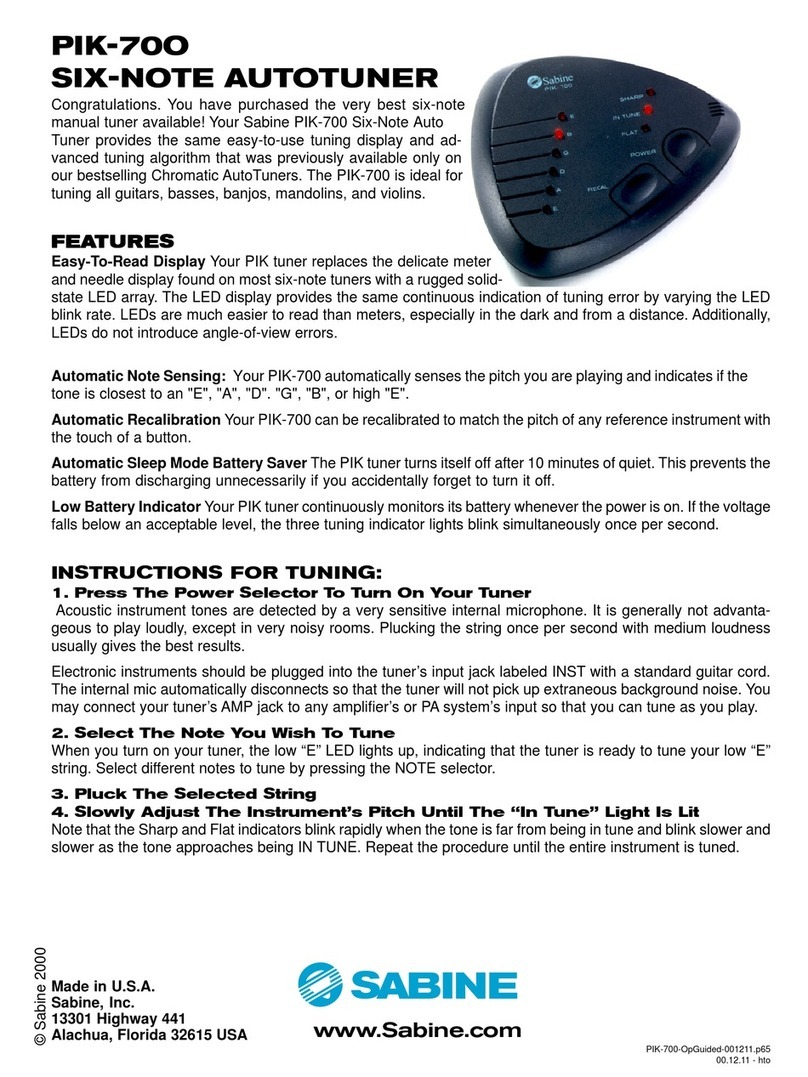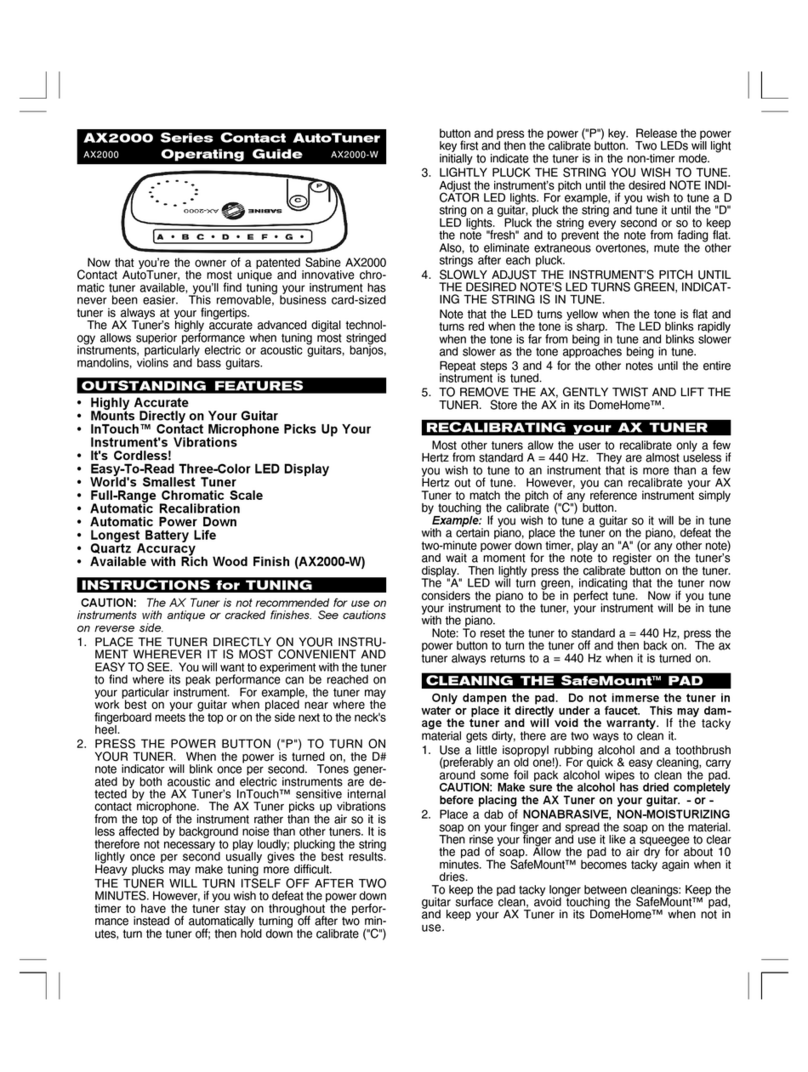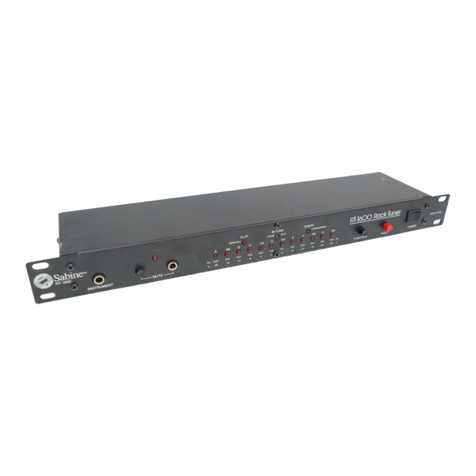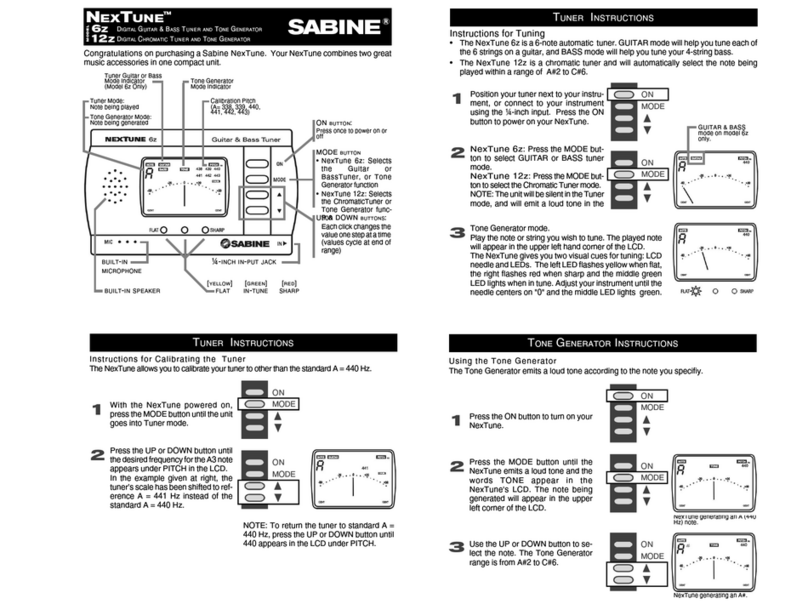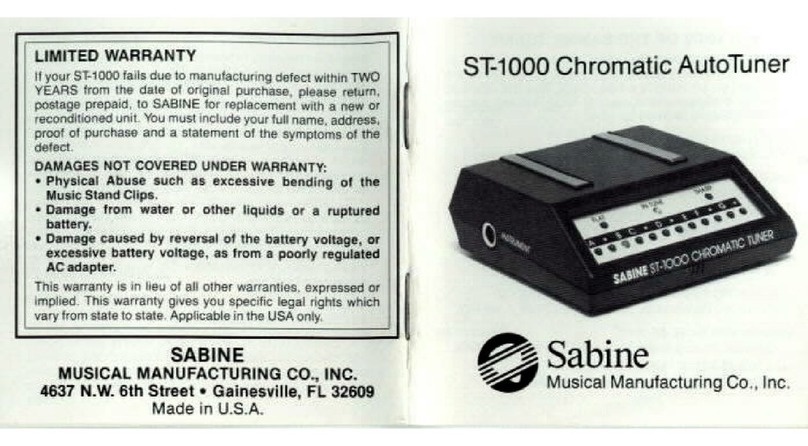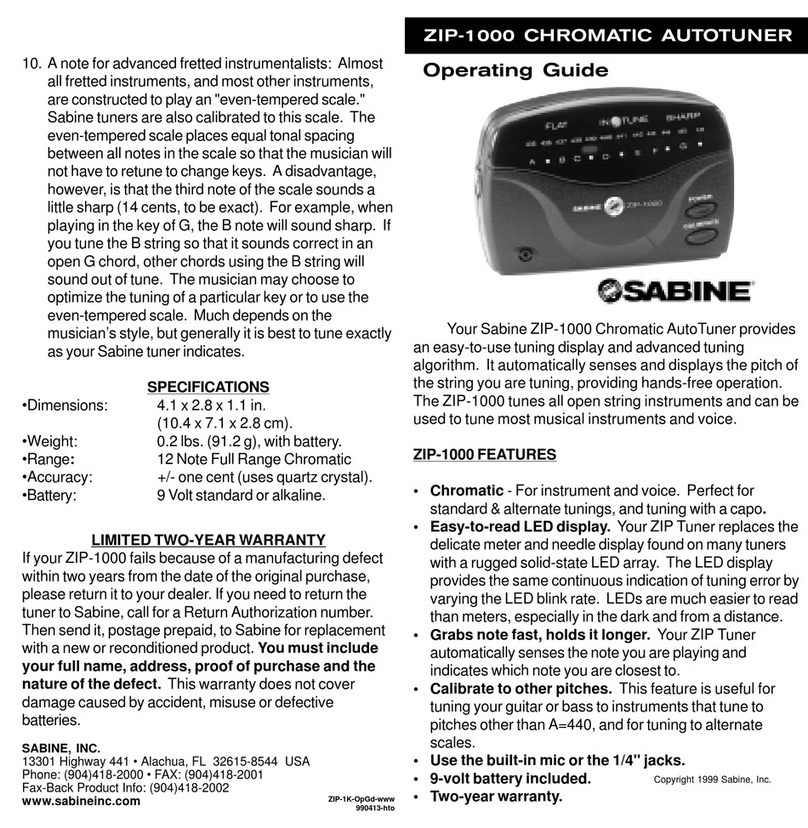
TUNING TIPS
Many musical instruments have peculiarities that
cause annoying tuning problems. Most of these
peculiarities are overcome by following these
simple procedures:
1. Pluck one string at a time.
2. Pluck the instrument once per second to keep
thenote "fresh"while youare tuning. Notesgo
noticeably flat a second or two after being
plucked. If tuning a higher-pitched instrument
(such as a mandolin), pluck a little faster; for a
lower-pitched instrument (such as a bass),
pluck slower.
3. Do not pluck loudly. Generally light to medium
volumesprovide purer tones that are easier for
tuners to analyze.
4. Pluck the strings with the flesh of the thumb.
Fingernails and flat picks add overtones and
slow the tuning process.
5. Tune from a pitch that is flat up to the pitch you
desire. This procedure removes any slack in
the gears of the instrument’s tuning heads. If
you tune from SHARP to IN TUNE, the gears
will slip as you play, and the instrument will go
flat after a few minutes of playing.
6. If you have difficulty getting a note to register
onthetuner,trytouchingtheotherstringslightly
to stop their sympathetic vibrations. This will
eliminate any extraneous overtones that may
disturb the tuning.
7. Use good strings. (We recommend Sabine
NitroStasis™ Premium Strings.) Old strings
lose their uniformity and do not vibrate evenly.
New strings stretch flat as you play.
8. All sources of friction cause tuning problems.
For example, if the slot in an instrument’s nut
is too tight, the string will be pulled flat as it is
played. A tight nut (or capo) will cause the
string’s pitch to change in steps rather than
evenly.
9. Avoid pressure on the instrument while tuning.
Even moderate pressure on the neck of a gui-
tarwillcauseanoticeablechangeinpitch. Also,
press the strings straight down to the finger-
board. Bending the strings sideways is very
common, especially on difficult chords, but
causes the strings to be pulled sharp.
10.A note for advanced fretted instrumentalists:
Almost all fretted instruments, and most other
instruments, are constructed to play an "even-
tempered scale." Sabine tuners are also cali-
brated to this scale. The even-tempered scale
places equal tonal spacing between all notes
in the scale so that the musician will not have
toretunetochangekeys. Adisadvantage,how-
ever, isthat thethird note of the scale sounds a
littlesharp(14cents,tobeexact). Forexample,
when playing in the key of G, the B note will
sound sharp. If you tune the B string so that it
sounds correct in an open G chord, other
chordsusing the Bstring willsound out oftune.
The musician may choose to optimize the tun-
ing of a particular key or to use the even-tem-
pered scale. Much depends on the musician’s
style, but generally it is best to tune exactly as
your Sabine tuner indicates.
SPECIFICATIONS
• Dimensions: 4.1 x 2.8 x 1.1 in.
(10.4 x 7.1 x 2.8 cm)
• Weight: 0.2 lbs. (91.2 g), with battery
• Notes tuned: E, A, D, G, B, E
• Accuracy: +/- one cent (uses quartz crystal)
• Battery: 9 Volt standard or alkaline
LIMITED TWO-YEAR WARRANTY
If your ZIP-700 fails because of a manufacturing
defect within two years from the date of the origi-
nalpurchase, please returnit to yourdealer. If you
need to return the tuner to Sabine, call for a Re-
turn Authorization number. Then send it, postage
prepaid, to Sabine for replacement with a new or
reconditionedproduct.You must include your full
name, address, proof of purchase and the na-
ture of the defect. This warranty does not cover
damage caused by accident, misuse or defective
batteries.
SABINE, INC.
13301 Highway 441 • Alachua, FL 32615-8544
USA
Phone:(904)418-2000 • FAX: (904)418-2001
www.SabineUSA.com
© 1996-2000 Sabine, Inc.
